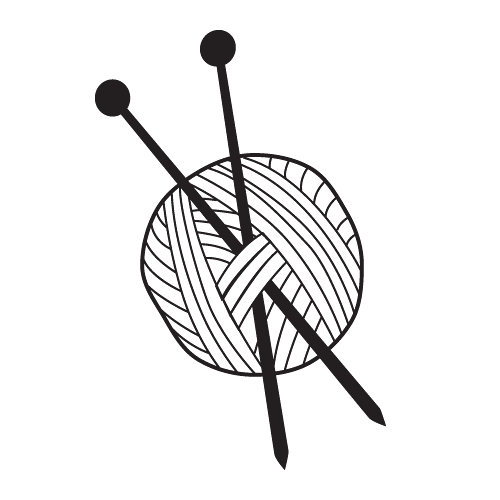I have been working on a series of articles which will be turned into an e-course for knitters who are knitting their first ever socks. I am always happy to recruit new sock knitters! If I think the information from one of the articles might be of interest to more experienced knitters, I am sharing it on my blog. How to choose sock yarn was from one of the articles written for this course. If you know of a fibre artist who wants to learn to knit socks, tell them to watch this space. The e-course (which will be free) will be available this summer. Today I am sharing information from another part of the course about the anatomy of a sock. Also, let me know if you have any feedback - it has been a looooooong time since I was a new sock knitter.
Socks are typically knit in
the round (seamlessly) either from the toe up or the cuff down.
The front and back
of the sock are worked simultaneously until you get to the heel where the heel stitches are worked separately until you get to the gusset/foot then the sock is worked in the round again until you finish toe.
Here is a schematic of a sock with a heel flap and gusset style heel:
Here is a schematic of a sock with a heel flap and gusset style heel:
The Cuff
The cuff is traditionally worked in a ribbed pattern so that it is
stretchy enough to accommodate being pulled off and on over your heel but will
be elastic enough to grip your calf so your sock doesn’t fall down.
The Leg
The leg is often
worked in a unique pattern stitch, or it can be worked in plain
stockinette. Sometimes the front and back of the leg are worked in different stitch
patterns. After you have made a few
pairs of socks, you will be comfortable knitting socks that use different
patterns like lace, cables or ribbing.
The Heel Flap
There are many
different types of heels, among the most popular are the short row heel and a heel flap and gusset.
The heel is
typically worked on 1/2 of the total stitches.
Often, the heel flap is knit using double knitting to reinforce the
fabric since it is a common place for socks to show the first signs of wear.
The Heel and Gussets
Like the heel flap,
the heel is traditionally worked over 1/2 of the total stitches. Short rows are used to shape the heel (to
make it that 3D curved shape like your foot) and reduce the number of heel
stitches. Stitches are then picked up to
form the gussets. The gussets are the
triangular shaped fabric on either side of the ankle. They contribute to the elasticity of the sock
so that the sock will accommodate your heel and move with your foot.
The Foot
The foot of the sock
is worked in the round like the cuff and leg.
Sometimes if a stitch pattern is used on the leg of the sock, it is
continued on the top of foot. The bottom
of the foot is usually worked in stockinette as most people don't find the
texture of a stitch pattern very comfortable to walk on all day. Also, who looks at the bottom of your feet?
The Toe
The toe is also
worked in the round and stitches are decreased until about 1/4 of the total
stitches remain. Then we graft (a type
of sewing) the stitches closed so that there is no seam. One of the benefits of hand knit socks is
that you can eliminate that annoying seam at the toe of your sock. There are as many different toe options as
there are heel options as well as many options for closing the toe at the end.















No comments:
Post a Comment